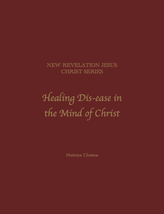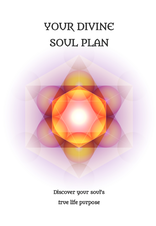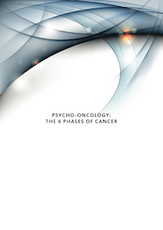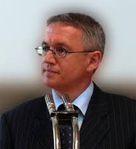Psycho-Oncology: Discover How Stress Causes Cancer
Phase 1 of Cancer: Inescapable Shock
Phase 2 of Cancer: Adrenaline Depletion
Phase 3 of Cancer: The Cancer Fungus
Phase 4 of Cancer: Niacin Deficiency
Phase 5 of Cancer: Vitamin C Depletion
Phase 6 of Cancer: Immune Suppression
WHOLE BODY HYPERTHERMIA CANCER TREATMENT
Hyperthermia treatment for cancer is where the body tissue is exposed to high temperatures. Research has shown that high temperatures can damage and kill cancer cells, usually with minimal injury to normal tissues. It is proposed that by killing cancer cells and damaging proteins and structures within the cells, hyperthermia treatment may shrink tumours (National Cancer Institute [NCI], 2004). Preliminary data suggest that heat may be especially destructive to two types of tumour cells—those that are making deoxyribonucleic acid (DNA) in preparation for division and those that are acidic and poorly oxygenated. These cell types tend to be resistant to radiation. Whole body hyperthermia cancer treatment (WBH), achieved with either radiant heat or extracorporeal technologies, elevates the temperature of the entire body to at least 41°c. In radiant WBH, heat is externally applied to the whole body using hot water blankets, hot wax, inductive coils, or thermal chambers. The patient is sedated throughout the WBH procedure, which lasts approximately four hours. The patient reaches target temperature within approximately 1.3 hours, is maintained at 41.8°c for one hour, and experiences a one-hour cooling phase.
During treatment, the esophageal, rectal, skin and ambient air temperatures are monitored at 10-minute intervals. Small probes may be inserted into the tumour under a local anaesthetic to monitor the temperature of the affected tissue and surrounding tissue. Heart rate, respiratory rate, and cardiac rhythm are continuously monitored. Patients are returned to regular inpatient rooms after hyperthermia cancer treatment and discharged after 20–24 hours of observation (Green, 1991; Robins, et al., 1997). Extracorporeal WBH is achieved by reinfusion of extra-corporeally heated blood. A circuit of blood is created outside the body by accessing an artery, usually the femoral artery, and creating an extracorporeal loop. The circulating blood is passed through a heating device, usually a water bath or hot air, and the heated blood is then re-injected into a major vein. The desired body temperature is adjusted and controlled by changing the volume flow of the warmed re-infused blood. Extracorporeal hyperthermia treatments are conducted under general anaesthesia. To counteract the activation of coagulation by the hemodialyzer, high-dose heparin is administered. An extracorporeal whole body hyperthermia treatment session typically lasts four hours. Target temperature is reached in two hours and is maintained for one hour, followed by a cooling period of one hour. Subsequently, the patient is infused with normal saline to maintain systolic blood pressure above 100 mm Hg. The patient is then monitored weekly for complications.
During treatment, the esophageal, rectal, skin and ambient air temperatures are monitored at 10-minute intervals. Small probes may be inserted into the tumour under a local anaesthetic to monitor the temperature of the affected tissue and surrounding tissue. Heart rate, respiratory rate, and cardiac rhythm are continuously monitored. Patients are returned to regular inpatient rooms after hyperthermia cancer treatment and discharged after 20–24 hours of observation (Green, 1991; Robins, et al., 1997). Extracorporeal WBH is achieved by reinfusion of extra-corporeally heated blood. A circuit of blood is created outside the body by accessing an artery, usually the femoral artery, and creating an extracorporeal loop. The circulating blood is passed through a heating device, usually a water bath or hot air, and the heated blood is then re-injected into a major vein. The desired body temperature is adjusted and controlled by changing the volume flow of the warmed re-infused blood. Extracorporeal hyperthermia treatments are conducted under general anaesthesia. To counteract the activation of coagulation by the hemodialyzer, high-dose heparin is administered. An extracorporeal whole body hyperthermia treatment session typically lasts four hours. Target temperature is reached in two hours and is maintained for one hour, followed by a cooling period of one hour. Subsequently, the patient is infused with normal saline to maintain systolic blood pressure above 100 mm Hg. The patient is then monitored weekly for complications.
WHOLE BODY HYPERTHERMIA CANCER SURVIVAL STUDY
Cancer Survival Study: Chemotherapy resistant sarcoma treated with whole body hyperthermia (WBH) combined with 1-3-bis(2-chloroethyl)-1-nitrosourea (BCNU). Houston Department of Internal Medicine, University of Texas Medical School 77030. J Authors: M Bull, L H Cronau, B M Newman, K Jabboury, S J Allen, S Ohno, T Smith, A S Tonnesen. "Seventeen patients with chemotherapy-resistant metastatic sarcoma were treated with whole body hyperthermia (WBH) combined simultaneously with 1-3-Bis(2-chloroethyl)-1-nitrosourea (BCNU). All of the patients had chemotherapy resistant metastases to major organ sites. Patients were heated to 41.8-42.0 degrees C for 2 hours using an insulated blanket heating technique. Two patients (12%) experienced partial responses (PR). In addition, four objective tumour responses (OR) lasting more than 4 months were documented. One patient with previously rapidly growing chondrosarcoma pulmonary metastases experienced stable disease (SD) for 38 months from the onset of treatment. Median survival of seven patients with responding tumours (PR, OR and SD) compared with 10 patients with progressive disease was 15 versus 2 months, respectively. No treatment related deaths occurred. These data suggest that WBH combined with chemotherapy is associated with disease response in patients with chemotherapy-resistant, widely disseminated sarcoma metastases. The above study shows of the 17 patients treated with Whole Body Hyperthermia, 7 (41%) responded favourably with an average survival of 15 months, compared to 10 (59%) who did not respond to treatment with an average survival of 2 months."
LOCO-REGIONAL HYPERTHERMIA CANCER TREATMENT
The same principles apply with Loco-Regional Hyperthermia treatment as they do with Whole Body Hyperthermia treatment in heating the body's tissue and cells to at least 41 °c for the purpose of killing cancer cells. In local hyperthermia treatment, heat is applied to a small area, such as a tumour, using various techniques that deliver energy to heat the tumour. Different types of energy may be used to apply heat, including microwave, radiofrequency, and ultrasound. In regional hyperthermia treatment, various approaches may be used to heat large areas of tissue, such as a body cavity, organ, or limb. Both are almost always used in combination with chemotherapy and more often radiation therapy. Loco-Regional Hyperthermia cancer treatment is used more frequently, particularly in hospital settings, than is Whole Body Hyperthermia treatment, and for this reason, there have been more cancer survival studies completed in the area of Loco-regional hyperthermia treatment.
LOCO-REGIONAL HYPERTHERMIA DOUBLES CANCER SURVIVAL RATES
The following are three press releases from BSD Medical Corp. revealing the clinical evidence of hyperthermia treatment in extending cancer survival rates, including the 12-year follow-up survival data for advanced cervical cancer patients treated with radiation plus hyperthermia therapy, as compared to radiation treatments alone.
Press Release (#1): Twelve-Year survival Data Shows Durability Of Hyperthermia Therapy's Enhancement of Radiation in Treating Cancer. SALT LAKE CITY, Utah, June 22, 2007—BSD Medical Corp. (AMX:BSM) announced today that a report delivered at the European Society for Hyperthermic Oncology (ESHO) conference recently held in Prague revealed the 12-year follow-up survival data for advanced cervical cancer patients treated with radiation plus hyperthermia therapy, as compared to radiation treatments alone. The original study was a Phase III clinical trial involving 358 patients with locally advanced pelvic tumors conducted at the University Hospital of Daniel den Hoed Cancer Center in Rotterdam and the Academic Medical Center in Amsterdam. The 114 cervical cancer patients enrolled in the study had tumours that were advanced, and their prognosis was generally grave. In April 2000 the LANCET (a highly-regarded London-based medical journal) published the 3-year survival follow-up data for advanced cervical cancer patients in the study, showing a 51% survival rate for patients who received radiation plus hyperthermia therapy, as opposed to 27% of those who received radiation therapy alone (see LANCET vol. 355, pp. 1119-1125). According to the recent report at the ESHO conference, after 12 years the survival rate for the patients who received radiation plus hyperthermia therapy was 37%, as compared to a survival rate of 20% for patients who received radiation alone (p=0.03).
One of the primary concerns about the viability of new therapies is their durability. According to this study, the margin of increased survival rate was reported to be approximately the same at 12 years (an 85% increase) as it was at 3 years (an 89% increase) for patients who received hyperthermia therapy in addition to radiation treatments. The lead author in this study was Jacoba van der Zee, M. D. Funding for the study was provided by the Dutch Health Insurance Council. This study involved the use of the BSD-2000 by BSD Medical Corp. for delivery of precision-focused hyperthermia therapy. BSD Medical Corp. is a leading developer of systems used to provide therapies involving precision-focused heat for the treatment of cancer. Statements contained in this press release that are not historical facts are forward-looking statements, including future prospects for the company relating to research described herein, as defined in the Private Securities Litigation Reform Act of 1995. All forward-looking statements are subject to risks and uncertainties detailed in the Company's filings with the Securities and Exchange Commission.
12 Year Follow-Up Results: Long-Term Improvement in Treatment Outcome after Radiotherapy and Hyperthermia in Locoregionally Advanced Cervix Cancer: An Update of the Dutch Deep Hyperthermia Trial. Led by Dr Jacoba van der Zee. PURPOSE: The local failure rate in patients with locoregionally advanced cervical cancer is 41-72% after radiotherapy (RT) alone, whereas local control is a prerequisite for cure. The Dutch Deep Hyperthermia Trial showed that combining RT with hyperthermia (HT) improved 3-year local control rates of 41-61%, as we reported earlier. In this study, we evaluate long-term results of the Dutch Deep Hyperthermia Trial after 12 years of follow-up. METHODS AND MATERIALS: From 1990 to 1996, a total of 114 women with locoregionally advanced cervical carcinoma were randomly assigned to RT or RT + HT. The RT was applied to a median total dose of 68 Gy. The HT was given once weekly. The primary end point was local control. Secondary end points were overall survival and late toxicity.
RESULTS: At the 12-year follow-up, local control remained better in the RT + HT group (37% vs. 56%; p = 0.01). Survival was persistently better after 12 years: 20% (RT) and 37% (RT + HT; p = 0.03). World Health Organization (WHO) performance status was a significant prognostic factor for local control. The WHO performance status, International Federation of Gynaecology and Obstetrics (FIGO) stage, and tumour diameter were significant for survival. The benefit of HT remained significant after correction for these factors. European Organization for Research and Treatment of Cancer Grade 3 or higher radiation-induced late toxicities were similar in both groups. CONCLUSIONS: For locoregionally advanced cervical cancer, the addition of HT to RT resulted in long-term major improvement in local control and survival without increasing late toxicity. This combined treatment should be considered for patients who are unfit to receive chemotherapy. For other patients, the optimal treatment strategy is the subject of on-going research.
Press Release (#2): Clinical Evidence and Advanced Technology Supporting Hyperthermia Therapy Emphasized at Annual ACRO Conference. SALT LAKE CITY, Utah, February 26, 2007—BSD Medical Corp. (AMEX:BSM) today reviewed the presentations made at the annual conference of the American College of Radiation Oncology (ACRO) held February 22-24 in San Diego. The emphasis was on the clinical science behind hyperthermia therapy for treating cancer and BSD Medical’s advanced systems used to deliver the therapy. In addition to a 45-minute lecture by Dr. Mark Hurwitz of Harvard Medical School on the results of clinical studies on hyperthermia and the technological capabilities now emerging to deliver the cancer therapy, a commercial exhibit by BSD Medical also showcased the science supporting the therapy and the advanced features of the BSD’s cancer therapy systems.
THE SCIENCE: The lecture included a review of Phase III clinical studies that have been conducted adding hyperthermia to radiation treatments as compared to radiation treatments alone.
• In a clinical study conducted in Italy involving 41 patients (44 nodes) with inoperable Stage IV head and neck cancer, patients receiving hyperthermia and radiation therapy had an 83% complete response rate compared to 41% for patients who received radiation therapy alone, and the 3-year local relapse-free survival rate was 24% for patients receiving only radiation and 68% for those who received both radiation and hyperthermia therapy. (See International Journal of Radiation Oncology, Biology, Physics Vol. 28, pp. 163-169.)
• In an international clinical study conducted in Denmark, the Netherlands and Norway involving 128 patients with recurrent or metastatic malignant melanoma, patients who received hyperthermia therapy along with radiation had a complete response rate for recurrent malignant melanoma lesions of 62% compared to 35% for those who received radiation treatments alone, and the local relapse-free survival rate at 5 years was 46% for those who received both hyperthermia and radiation and 28% for those who received radiation alone. (See International Journal of Hyperthermia, Vol., 12, No. 1, 3-20.)
• In a clinical study conducted at UCSF involving 112 patients with glioblastoma maltiforme (brain cancer), patients who received both hyperthermia and interstitial radiation therapy (brachytherapy) had a more than double 2-year survival rate as compared to patients who received brachytherapy alone. (See International Journal of Radiation Oncology, Biology, Physics, Vol. 40, No. 2, pp. 287-295.)
• In a clinical study conducted in the Netherlands involving 358 patients with locally advanced pelvic tumours, bladder cancer patients who received radiation alone had a complete response rate of 51% compared to 73% for those who received hyperthermia and radiation. The complete response rate for patients with advanced cervical cancer was 83% for those who received radiation plus hyperthermia and 57% for those who received radiation alone. (See The Lancet, Vol. 355, pp. 1119-1125.) In addition, a clinical study of 61 patients at Duke University using the tri-modality treatments hyperthermia, radiation and chemotherapy together for the treatment of advanced cervical cancer resulted in a complete remission in 90%. (See CANCER, August 14, 2005, Vol. 104, No. 4.)
• In a clinical study conducted in the United Kingdom, the Netherlands and Canada involving 306 patients with superficial localized breast cancer, patients who received both hyperthermia and radiation therapy had a complete response rate of 59% compared to 41% for those who received radiation treatments alone. Local relapse-free survival was 50% for those who received both therapies and 30% for those who received radiation alone. (See International Journal of Radiation Oncology, Biology, Physics, Vol. 35, No. 4, pp. 731-744.) In addition, a clinical study conducted at Duke University involving patients with previously irradiated superficial tumors, 23.5% had a complete response when treated with radiation alone compared to a response rate of 68.2% for patients treated with hyperthermia plus radiation. (See Journal of Clinical Oncology, Vol. 23, No. 13, May 1, 2005.)
Press Release (#3): Targeted Hyperthermia Therapy Highlighted at Europe's Largest Radiation Oncology Convention. SALT LAKE CITY, November 6, 2006—BSD Medical Corp. (AMEX:BSM) today reviewed results from the recent European Society for Therapeutic Radiology and Oncology (ESTRO) convention held in Leipzig, Germany. The annual ESTRO convention is the most attended conference dedicated to radiation oncology in Europe. Some of the most recent results in clinical hyperthermia research were presented, as summarized below:
• New Progress in Treating Breast and Ovarian Cancer with Hyperthermia - Ellen Jones MD, PhD of Duke University Medical Center, Durham, North Carolina reviewed a multi-national clinical study directed by Duke that showed a sharp difference in cancer response when previously radiated breast cancers recurrent in the chest wall were given both hyperthermia and radiation therapy as opposed to radiation therapy alone. Of those patients who received the combined therapy, 68.2% received a complete response from the treatment, as compared to 23.5% who received a complete response from radiation therapy alone. (The study was published in the May 1, 2005, Journal of Clinical Oncology.) She also reported preliminary research on the use of hyperthermia in treating ovarian cancer, and described a new Phase I/II study using the chemotherapy drugs cisplatin and paclitaxel with whole abdomen hyperthermia.
• Hyperthermia for Cervix and Vagina Cancer - Jacoba van der Zee MD, PhD of the Daniel den Hoed Cancer Center, Erasmus University Medical School Rotterdam, Netherlands reviewed a multi-center Phase III clinical study that showed a marked difference in cancer response and survival rate between advanced cervical cancer patients who received hyperthermia and radiation as opposed to those who received radiation alone. Of patients who received the combined therapy, 83% had a complete response as opposed to 57% who received radiation therapy alone. The three-year overall survival rate was 51% for those who received the combined therapy, as opposed to 27% for those who received radiation therapy alone. This study was published in the LANCET (see vol. 355, pp. 1119-1125). Based on results from preliminary research, Dr. van der Zee is also proposing a Phase III clinical study on the use of hyperthermia plus radiation in treating vaginal cancer.
• Hyperthermia Treatments for Bladder, Prostate and Rectal Cancer - Oliver Ott, MD of the University Hospital in Erlangen, Germany reviewed precedent clinical research using hyperthermia for treating targeted cancers as the basis for current work being done at the University in targeted bladder, prostate and rectal cancer. The objective of the bladder cancer research is to obtain a complete response from the cancer so that surgical removal of the entire bladder is not required. To achieve this, only the bladder tumor is removed surgically through the urethra and the residual cancer is treated with other therapies. At Erlangen, of 16 bladder cancer patients with T1 tumors, 100% of those who received hyperthermia therapy (via the BSD-2000) in combination with either radiation or radiation plus chemotherapy had a complete remission. Of 28 patients with T1-2 bladder tumors, 96% had a complete remission with hyperthermia and either radiation or radiation plus chemotherapy. The possible fields of application for prostate cancer research being designed at Erlangen are salvage therapy after removal of the prostate and treatment of primary prostate cancer. The objective of anticipated rectal cancer research will be to use radiation, chemotherapy and regional hyperthermia to allow surgical removal of previously inoperable rectal tumors.
Press Release (#1): Twelve-Year survival Data Shows Durability Of Hyperthermia Therapy's Enhancement of Radiation in Treating Cancer. SALT LAKE CITY, Utah, June 22, 2007—BSD Medical Corp. (AMX:BSM) announced today that a report delivered at the European Society for Hyperthermic Oncology (ESHO) conference recently held in Prague revealed the 12-year follow-up survival data for advanced cervical cancer patients treated with radiation plus hyperthermia therapy, as compared to radiation treatments alone. The original study was a Phase III clinical trial involving 358 patients with locally advanced pelvic tumors conducted at the University Hospital of Daniel den Hoed Cancer Center in Rotterdam and the Academic Medical Center in Amsterdam. The 114 cervical cancer patients enrolled in the study had tumours that were advanced, and their prognosis was generally grave. In April 2000 the LANCET (a highly-regarded London-based medical journal) published the 3-year survival follow-up data for advanced cervical cancer patients in the study, showing a 51% survival rate for patients who received radiation plus hyperthermia therapy, as opposed to 27% of those who received radiation therapy alone (see LANCET vol. 355, pp. 1119-1125). According to the recent report at the ESHO conference, after 12 years the survival rate for the patients who received radiation plus hyperthermia therapy was 37%, as compared to a survival rate of 20% for patients who received radiation alone (p=0.03).
One of the primary concerns about the viability of new therapies is their durability. According to this study, the margin of increased survival rate was reported to be approximately the same at 12 years (an 85% increase) as it was at 3 years (an 89% increase) for patients who received hyperthermia therapy in addition to radiation treatments. The lead author in this study was Jacoba van der Zee, M. D. Funding for the study was provided by the Dutch Health Insurance Council. This study involved the use of the BSD-2000 by BSD Medical Corp. for delivery of precision-focused hyperthermia therapy. BSD Medical Corp. is a leading developer of systems used to provide therapies involving precision-focused heat for the treatment of cancer. Statements contained in this press release that are not historical facts are forward-looking statements, including future prospects for the company relating to research described herein, as defined in the Private Securities Litigation Reform Act of 1995. All forward-looking statements are subject to risks and uncertainties detailed in the Company's filings with the Securities and Exchange Commission.
12 Year Follow-Up Results: Long-Term Improvement in Treatment Outcome after Radiotherapy and Hyperthermia in Locoregionally Advanced Cervix Cancer: An Update of the Dutch Deep Hyperthermia Trial. Led by Dr Jacoba van der Zee. PURPOSE: The local failure rate in patients with locoregionally advanced cervical cancer is 41-72% after radiotherapy (RT) alone, whereas local control is a prerequisite for cure. The Dutch Deep Hyperthermia Trial showed that combining RT with hyperthermia (HT) improved 3-year local control rates of 41-61%, as we reported earlier. In this study, we evaluate long-term results of the Dutch Deep Hyperthermia Trial after 12 years of follow-up. METHODS AND MATERIALS: From 1990 to 1996, a total of 114 women with locoregionally advanced cervical carcinoma were randomly assigned to RT or RT + HT. The RT was applied to a median total dose of 68 Gy. The HT was given once weekly. The primary end point was local control. Secondary end points were overall survival and late toxicity.
RESULTS: At the 12-year follow-up, local control remained better in the RT + HT group (37% vs. 56%; p = 0.01). Survival was persistently better after 12 years: 20% (RT) and 37% (RT + HT; p = 0.03). World Health Organization (WHO) performance status was a significant prognostic factor for local control. The WHO performance status, International Federation of Gynaecology and Obstetrics (FIGO) stage, and tumour diameter were significant for survival. The benefit of HT remained significant after correction for these factors. European Organization for Research and Treatment of Cancer Grade 3 or higher radiation-induced late toxicities were similar in both groups. CONCLUSIONS: For locoregionally advanced cervical cancer, the addition of HT to RT resulted in long-term major improvement in local control and survival without increasing late toxicity. This combined treatment should be considered for patients who are unfit to receive chemotherapy. For other patients, the optimal treatment strategy is the subject of on-going research.
Press Release (#2): Clinical Evidence and Advanced Technology Supporting Hyperthermia Therapy Emphasized at Annual ACRO Conference. SALT LAKE CITY, Utah, February 26, 2007—BSD Medical Corp. (AMEX:BSM) today reviewed the presentations made at the annual conference of the American College of Radiation Oncology (ACRO) held February 22-24 in San Diego. The emphasis was on the clinical science behind hyperthermia therapy for treating cancer and BSD Medical’s advanced systems used to deliver the therapy. In addition to a 45-minute lecture by Dr. Mark Hurwitz of Harvard Medical School on the results of clinical studies on hyperthermia and the technological capabilities now emerging to deliver the cancer therapy, a commercial exhibit by BSD Medical also showcased the science supporting the therapy and the advanced features of the BSD’s cancer therapy systems.
THE SCIENCE: The lecture included a review of Phase III clinical studies that have been conducted adding hyperthermia to radiation treatments as compared to radiation treatments alone.
• In a clinical study conducted in Italy involving 41 patients (44 nodes) with inoperable Stage IV head and neck cancer, patients receiving hyperthermia and radiation therapy had an 83% complete response rate compared to 41% for patients who received radiation therapy alone, and the 3-year local relapse-free survival rate was 24% for patients receiving only radiation and 68% for those who received both radiation and hyperthermia therapy. (See International Journal of Radiation Oncology, Biology, Physics Vol. 28, pp. 163-169.)
• In an international clinical study conducted in Denmark, the Netherlands and Norway involving 128 patients with recurrent or metastatic malignant melanoma, patients who received hyperthermia therapy along with radiation had a complete response rate for recurrent malignant melanoma lesions of 62% compared to 35% for those who received radiation treatments alone, and the local relapse-free survival rate at 5 years was 46% for those who received both hyperthermia and radiation and 28% for those who received radiation alone. (See International Journal of Hyperthermia, Vol., 12, No. 1, 3-20.)
• In a clinical study conducted at UCSF involving 112 patients with glioblastoma maltiforme (brain cancer), patients who received both hyperthermia and interstitial radiation therapy (brachytherapy) had a more than double 2-year survival rate as compared to patients who received brachytherapy alone. (See International Journal of Radiation Oncology, Biology, Physics, Vol. 40, No. 2, pp. 287-295.)
• In a clinical study conducted in the Netherlands involving 358 patients with locally advanced pelvic tumours, bladder cancer patients who received radiation alone had a complete response rate of 51% compared to 73% for those who received hyperthermia and radiation. The complete response rate for patients with advanced cervical cancer was 83% for those who received radiation plus hyperthermia and 57% for those who received radiation alone. (See The Lancet, Vol. 355, pp. 1119-1125.) In addition, a clinical study of 61 patients at Duke University using the tri-modality treatments hyperthermia, radiation and chemotherapy together for the treatment of advanced cervical cancer resulted in a complete remission in 90%. (See CANCER, August 14, 2005, Vol. 104, No. 4.)
• In a clinical study conducted in the United Kingdom, the Netherlands and Canada involving 306 patients with superficial localized breast cancer, patients who received both hyperthermia and radiation therapy had a complete response rate of 59% compared to 41% for those who received radiation treatments alone. Local relapse-free survival was 50% for those who received both therapies and 30% for those who received radiation alone. (See International Journal of Radiation Oncology, Biology, Physics, Vol. 35, No. 4, pp. 731-744.) In addition, a clinical study conducted at Duke University involving patients with previously irradiated superficial tumors, 23.5% had a complete response when treated with radiation alone compared to a response rate of 68.2% for patients treated with hyperthermia plus radiation. (See Journal of Clinical Oncology, Vol. 23, No. 13, May 1, 2005.)
Press Release (#3): Targeted Hyperthermia Therapy Highlighted at Europe's Largest Radiation Oncology Convention. SALT LAKE CITY, November 6, 2006—BSD Medical Corp. (AMEX:BSM) today reviewed results from the recent European Society for Therapeutic Radiology and Oncology (ESTRO) convention held in Leipzig, Germany. The annual ESTRO convention is the most attended conference dedicated to radiation oncology in Europe. Some of the most recent results in clinical hyperthermia research were presented, as summarized below:
• New Progress in Treating Breast and Ovarian Cancer with Hyperthermia - Ellen Jones MD, PhD of Duke University Medical Center, Durham, North Carolina reviewed a multi-national clinical study directed by Duke that showed a sharp difference in cancer response when previously radiated breast cancers recurrent in the chest wall were given both hyperthermia and radiation therapy as opposed to radiation therapy alone. Of those patients who received the combined therapy, 68.2% received a complete response from the treatment, as compared to 23.5% who received a complete response from radiation therapy alone. (The study was published in the May 1, 2005, Journal of Clinical Oncology.) She also reported preliminary research on the use of hyperthermia in treating ovarian cancer, and described a new Phase I/II study using the chemotherapy drugs cisplatin and paclitaxel with whole abdomen hyperthermia.
• Hyperthermia for Cervix and Vagina Cancer - Jacoba van der Zee MD, PhD of the Daniel den Hoed Cancer Center, Erasmus University Medical School Rotterdam, Netherlands reviewed a multi-center Phase III clinical study that showed a marked difference in cancer response and survival rate between advanced cervical cancer patients who received hyperthermia and radiation as opposed to those who received radiation alone. Of patients who received the combined therapy, 83% had a complete response as opposed to 57% who received radiation therapy alone. The three-year overall survival rate was 51% for those who received the combined therapy, as opposed to 27% for those who received radiation therapy alone. This study was published in the LANCET (see vol. 355, pp. 1119-1125). Based on results from preliminary research, Dr. van der Zee is also proposing a Phase III clinical study on the use of hyperthermia plus radiation in treating vaginal cancer.
• Hyperthermia Treatments for Bladder, Prostate and Rectal Cancer - Oliver Ott, MD of the University Hospital in Erlangen, Germany reviewed precedent clinical research using hyperthermia for treating targeted cancers as the basis for current work being done at the University in targeted bladder, prostate and rectal cancer. The objective of the bladder cancer research is to obtain a complete response from the cancer so that surgical removal of the entire bladder is not required. To achieve this, only the bladder tumor is removed surgically through the urethra and the residual cancer is treated with other therapies. At Erlangen, of 16 bladder cancer patients with T1 tumors, 100% of those who received hyperthermia therapy (via the BSD-2000) in combination with either radiation or radiation plus chemotherapy had a complete remission. Of 28 patients with T1-2 bladder tumors, 96% had a complete remission with hyperthermia and either radiation or radiation plus chemotherapy. The possible fields of application for prostate cancer research being designed at Erlangen are salvage therapy after removal of the prostate and treatment of primary prostate cancer. The objective of anticipated rectal cancer research will be to use radiation, chemotherapy and regional hyperthermia to allow surgical removal of previously inoperable rectal tumors.





